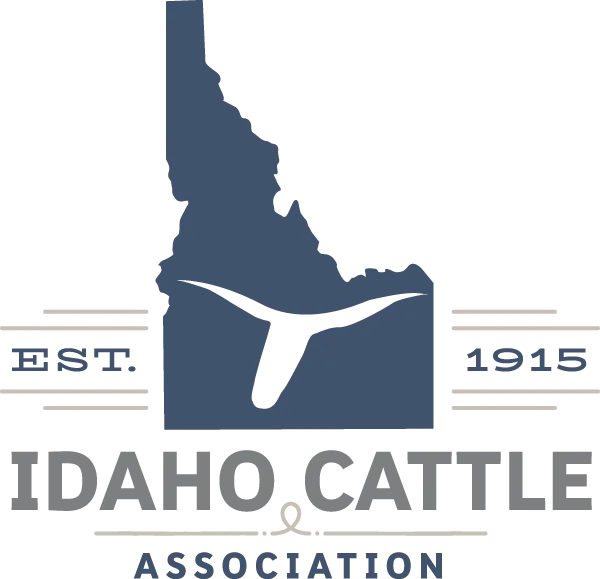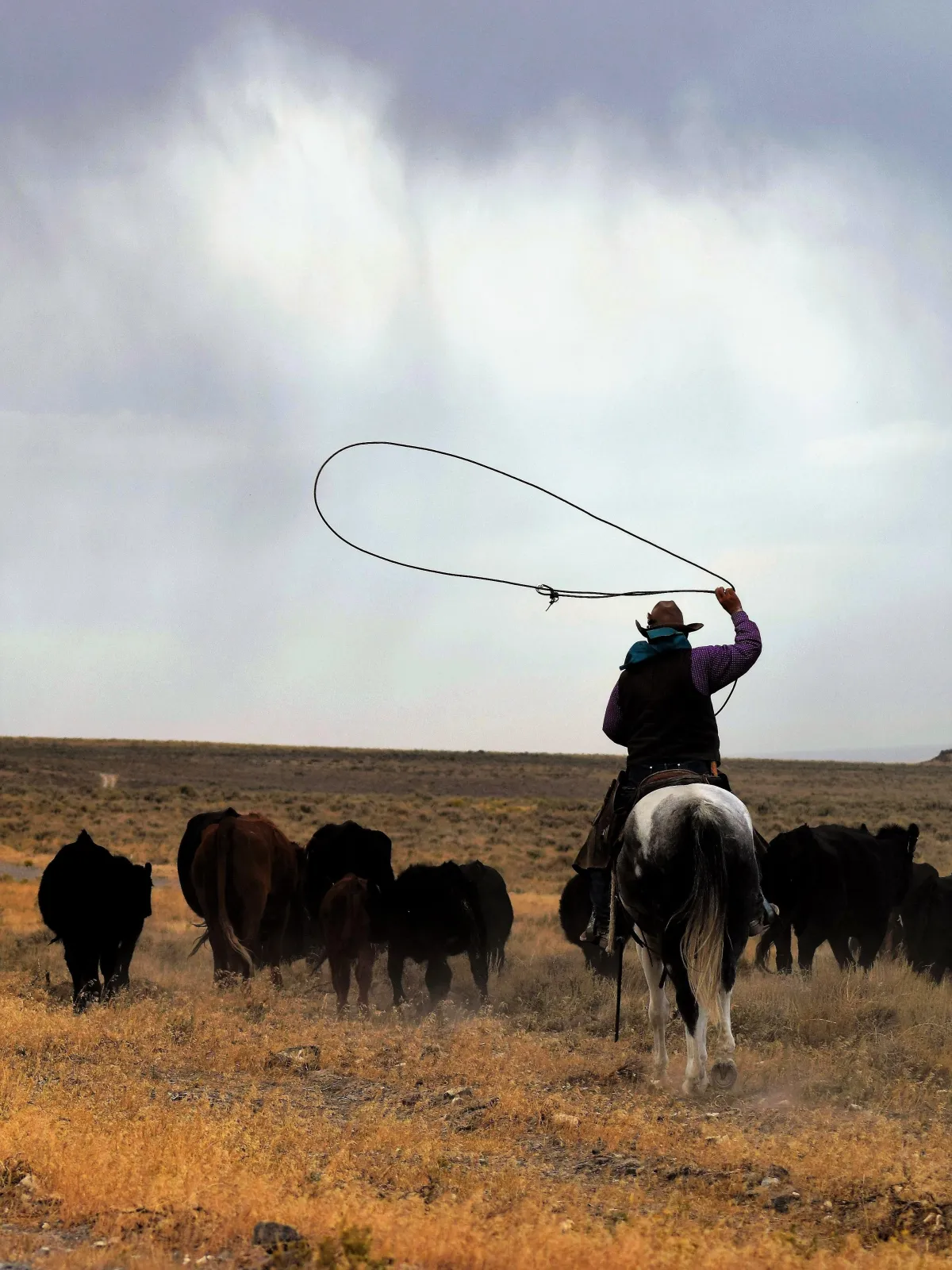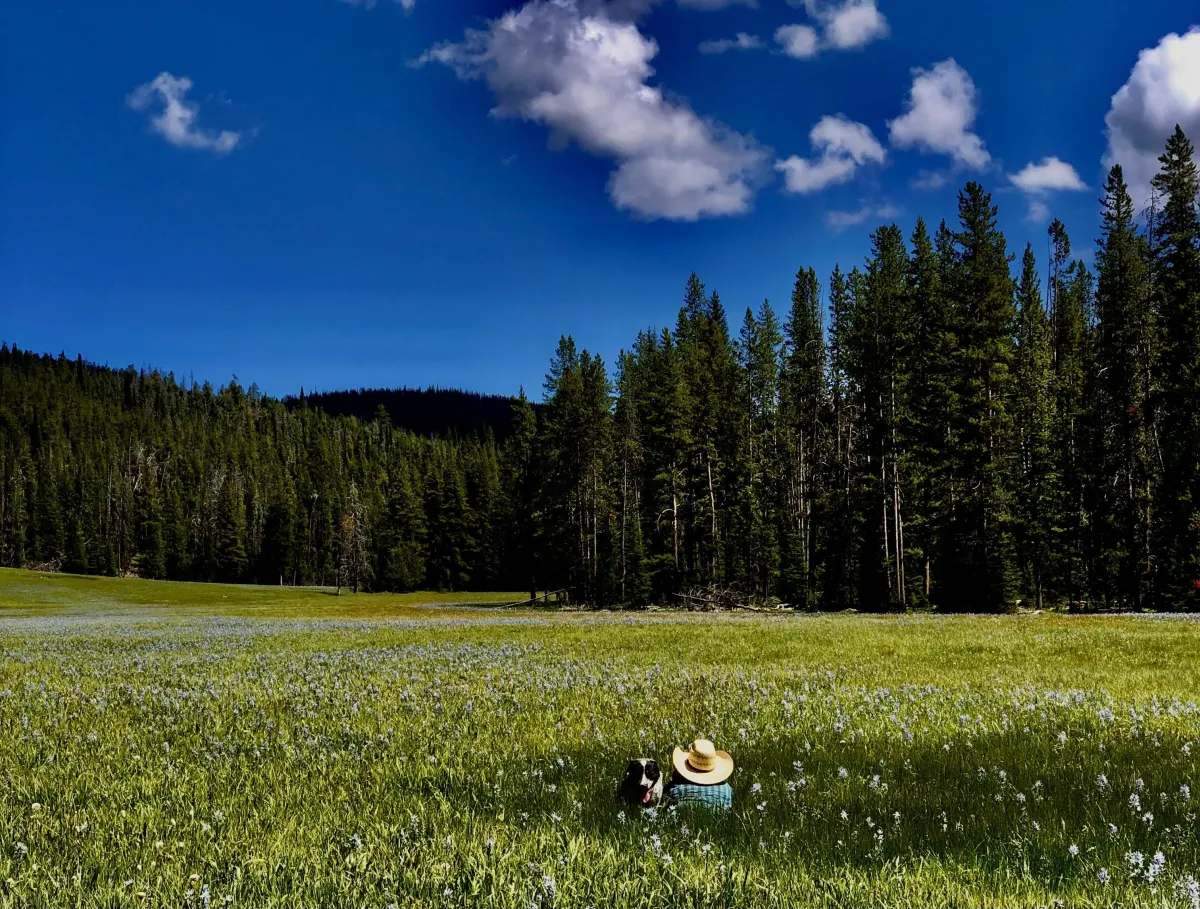
Idaho Cattle Association
Member Programs & Services
Member programs & services is the Idaho Cattle Association "hub of information" to help ranchers leverage resources and connect with opportunities to enhance their operational success.
Look below to learn about upcoming deadlines, various programs, and potential partners.
Contact: Montana MacConnell
Member Programs & Services Manager
(208) 343-1615
Upcoming Deadlines
NOTE: due to government shutdown, many deadlines are changing - refer to this page for updates.
31
DEC
LIVESTOCK DEPREDATION COMPENSATION
Deadline for Compensation Claims: December 31, 2025
The Idaho Governor's Office of Species Conservation (OSC) is accepting claims for livestock depredations due to wolves and grizzly bears during the 2025 calendar year. The program compensates livestock producers for depredations that have been investigated and validated by a State Authorized Investigator. Compensation payments for the 2025 grazing season will be based on the average market rate for livestock.
For additional information or to receive a claim form, contact Josh Uriarte at (208) 332-1556 or joshua.uriarte@osc.idaho.gov.
15
JAN
EQIP SIGN-UP APPLICATION DEADLINE
The Environmental Quality Incentives Program (EQIP) is a voluntary conservation program provided by the Natural Resources Conservation Service (NRCS). EQIP helps agricultural producers, ranchers, and landowners implement conservation practices that improve water quality, enhance soil health, conserve natural resources, and protect wildlife habitat through financial and technical assistance.
15
JAN
CONSERVATION STEWARDSHIP PROGRAM
The Environmental Quality Incentives Program (EQIP) is a voluntary conservation program provided by the Natural Resources Conservation Service (NRCS). EQIP helps agricultural producers, ranchers, and landowners implement conservation practices that improve water quality, enhance soil health, conserve natural resources, and protect wildlife habitat through financial and technical assistance.
15
JAN
AGRICULTURAL CONSERVATION EASEMENT PROGRAM (ACEP)
Agricultural Land Easements (ALE) help private and tribal landowners, land trusts, and other entities such as state and local governments protect croplands and grasslands on working farms and ranches by limiting non-agricultural uses of the land through conservation easements.
Wetland Reserve Easements (WRE) help private and tribal landowners protect, restore and enhance wetlands which have been previously degraded due to agricultural uses.
15
JAN
AGRICULTURAL MANAGEMENT ASSISTANCE
The Agricultural Management Assistance (AMA) helps agricultural producers manage financial risk through diversification, marketing or natural resource conservation practices.
15
JAN
REGENERATIVE PILOT PROGRAM
In December 2025, NRCS launched the NRCS Regenerative Pilot Program, a farmer first, outcomes-based approach to conservation designed to return the agency to its core mission – helping people help the land. NRCS is investing $700 million to specifically support regenerative agriculture, including:
$400 million through the Environmental Quality Incentives Program (EQIP); and
$300 million through the Conservation Stewardship Program (CSP)
01
MAR
LIVESTOCK FORAGE DISASTER PROGRAM
LFP Application Deadline: March 2, 2026
LFP provides compensation to eligible livestock producers who suffered grazing losses for covered livestock due to drought on privately owned or cash leased land or fire on federally managed land.
01
MAR
EMERGENCY ASSISTANCE for LIVESTOCK, HONEYBEES, & FARM-RAISED FISH PROGRAM
ELAP Application Deadline: March 2, 2026
Assistance for losses due to disease, adverse weather, or other conditions in 2025 not covered by LFP and LIP (i.e. trucking).
01
MAR
LIVESTOCK INDEMNITY PROGRAM
LIP Application Deadline: March 2, 2026
Benefits for livestock deaths beyond normal mortality in 2025 - i.e. loss from wildfire.

Project Examples
→ agricultural land easements,
→ prescribed burning,
→ native grass and forb planting,
→ wetland enhancements,
→ riparian restoration,
→ water developments,
→ virtual fencing,
→ traditional fencing,
→ invasive species control,
→ modified grazing systems,
→ depredation prevention strategies,
→ and more!
Programs & Partners
Natural Resources Conservation Service (NRCS) Programs
The Natural Resources Conservation Service (NRCS) supports Idaho’s agricultural community by offering technical and financial assistance to landowners and producers. Through various programs, the NRCS helps ranchers implement conservation practices that improve soil health, water quality, and overall sustainability. Follow the buttons below to learn more about each NRCS Program.
**If you are new to working with USDA, you will need to establish your Farm Record with the Farm Service agency (FSA). Establishing a Farm Record requires several forms and documents, so make an appointment with your FSA office as soon as possible.
Environmental Quality Incentives Program (EQIP)
WHAT IS IT?
The Environmental Quality Incentives Program (EQIP) is a voluntary conservation program provided by the Natural Resources Conservation Service (NRCS). EQIP helps agricultural producers, ranchers, and landowners implement conservation practices that improve water quality, enhance soil health, conserve natural resources, and protect wildlife habitat through financial and technical assistance.
PROGRAM DETAILS
Eligibility: EQIP is available to producers who own or operate on land engaged in agricultural production.
• contracts can last up to 10 years
• can apply more than once and stack projects
• applications are accepted year-round, funded per fiscal year
• applications go through ranking process
• EQIP can help you implement over 200 unique conservation practices, including; rotational grazing (with traditional or virtual fencing), planting pollinator habitat, planting cover crops, streambank stabilization, irrigation system improvements, etc.
Interested in EQIP? Visit the NRCS website here.
Conservation Stewardship Program (CSP)
**Applications to renew expiring contracts Deadline: June 20, 2025
WHAT IS IT?
The Conservation Stewardship Program (CSP) supports landowners in expanding their current conservation efforts while improving the sustainability of their operations. Administered by the Natural Resources Conservation Service (NRCS), CSP offers financial and technical assistance to farmers, ranchers, and forestland owners. By encouraging ongoing improvements, CSP helps participants refine and strengthen their conservation strategies, ensuring both environmental benefits and long-term agricultural viability.
PROGRAM DETAILS
Eligibility: CSP is available to producers who own or operate on land engaged in agricultural production, and are already doing conservation work on their operation.
• contracts are for five years, with opportunities for contract renewals
• CSP enhancement practices take conservation efforts to the next level - click here for a list of possible enhancements
• examples of CSP projects include; schedule timely planting and management of cover crops, develop a grazing plan that will improve your forage base, implement no-till to reduce erosion or manage forested areas in a way that benefits wildlife habitat
Interested in CSP? Visit the NRCS website here.
Agricultural Conservation Easement Program (ACEP)
**See the Land Trusts section below for more information about implementing this program.
WHAT IS IT?
The Agricultural Conservation Easement Program (ACEP) helps landowners protect and restore critical agricultural lands and wetlands. It provides financial assistance to purchase conservation easements, ensuring the land remains dedicated to agriculture, wetlands, or wildlife habitat preservation. ACEP supports landowners in maintaining long-term conservation practices that benefit the environment and local communities.
ACEP has two components:
Agricultural Land Easements (ALE) help private and tribal landowners, land trusts, and other entities such as state and local governments protect croplands and grasslands on working farms and ranches by limiting non-agricultural uses of the land through conservation easements.
Wetland Reserve Easements (WRE) help private and tribal landowners protect, restore and enhance wetlands which have been previously degraded due to agricultural uses.
PROGRAM DETAILS
Eligibility: private landowners of agricultural lands or wetlands interested in establishing long-term protection.
• financial assistance for purchasing conservation easements
• easements protect land from development for perpetuity (forever)
• help keep land in agricultural use for future generations
• ownership remains with the landowner
Interested in ACEP? Visit the NRCS website here.
Farm Service Agency (FSA) Programs
The Farm Service Agency (FSA) is a U.S. government agency that provides financial assistance and support to farmers, ranchers, and landowners. Through various programs, the FSA helps with conservation efforts, disaster relief, crop insurance, and farm loans. For cattle producers and landowners, the FSA offers resources that can help manage risk, improve land productivity, and support long-term sustainability. These programs aim to strengthen agricultural operations and ensure the economic stability of rural communities.
FSA Conservation:
Conservation Reserve Program (CRP)
WHAT IS IT?
The Conservation Reserve Program (CRP) is a voluntary initiative that assists landowners in enhancing environmental quality by modifying management of sensitive land in agricultural production. Participants receive annual rental payments and cost-share assistance to establish long-term, resource-conserving plant species, such as native grasses and trees. By focusing on land retirement and habitat restoration, CRP helps reduce soil erosion, improve water quality, and support wildlife populations, contributing to both environmental sustainability and the resilience of agricultural landscapes.
PROGRAM DETAILS
Eligibility: farmers and landowners with environmentally sensitive land that meets specific cropping and environmental criteria, demonstrating the potential for significant environmental benefits.
• voluntary enrollment
• funding comes from FSA, but monitoring is administered by the NRCS
• contracts last 10 to 15 years
• landowners receive payment in exchange for enrolling land in long-term conservation projects
Interested in CRP? Visit the FSA website here.
FSA Disaster Assistance:
Livestock Forage Disaster Program (LFP)
WHAT IS IT?
The Livestock Forage Disaster Program (LFP) provides financial assistance to livestock producers who have suffered grazing losses due to drought or fire. It helps cover the cost of forage loss on eligible grazing lands, supporting the recovery of affected operations.
Interested in LFP? Visit the FSA website here.
Livestock Indemnity Program (LIP)
WHAT IS IT?
The Livestock Indemnity Program (LIP) provides financial assistance to livestock producers who suffer losses due to disease outbreaks, extreme weather events, or attacks by wildlife. This program helps compensate producers for the death of livestock caused by eligible events, assisting in the recovery of their operations.
Interested in LIP? Visit the FSA website here.
Emergency Livestock Assistance Program (ELAP)
WHAT IS IT?
The Emergency Livestock Assistance Program (ELAP) provides financial aid to livestock producers who suffer losses due to natural disasters, such as wildfires, blizzards, or drought. ELAP helps cover emergency costs related to feed, water, and veterinary care, as well as losses from the death of livestock caused by such events.
Eligible losses include: grazing losses not covered under the Livestock Forage Disaster Program (LFP), loss of purchased feed and/or mechanically harvested feed due to an eligible adverse weather event, additional cost of transporting water and feed because of an eligible drought and additional cost associated with gathering livestock to treat for cattle tick fever. If you’ve suffered eligible losses during calendar year 2025, you must file a notice of loss and an application for payment by March 2, 2026.
Interested in ELAP? Visit the FSA website here.
Emergency Livestock Relief Program (ELRP)
WHAT IS IT?
The American Relief Act, 2025, provides for $2 billion in emergency relief payments to livestock producers suffering losses due to drought, wildfires, or flooding in calendar years 2023 and 2024. The Emergency Livestock Relief Program (ELRP) provides financial assistance to livestock producers who have experienced feed and water shortages due to drought conditions. The program helps offset the increased costs of feed and water, supporting recovery for affected operations.
Interested in ELRP? Visit the FSA website here.
FSA Marketing Protection:
Livestock Risk Protection (LRP)
WHAT IS IT?
The Livestock Risk Protection (LRP) program helps livestock producers manage the risk of market price declines. It allows producers to purchase insurance that provides financial protection if the market price of their livestock falls below a certain level. LRP covers cattle, swine, and lambs, helping producers stabilize their income during unpredictable market conditions.
Interested in LFP? Visit the FSA website here.
FSA Loan Opportunities:
FSA Loan Assistance
WHAT IS IT?
The Farm Service Agency (FSA) provides a variety of loan programs to support farmers, ranchers, and agricultural producers. These loans are designed to help individuals start, expand, or maintain their operations, and provide assistance during times of financial hardship. FSA loans are available for purchasing land, equipment, livestock, and for covering operational costs.
Eligibility: Eligibility for FSA loans is based on factors such as creditworthiness, farming experience, and the ability to repay the loan. Specific requirements may vary depending on the loan program.
Farm Ownership Loans: For purchasing or improving farmland and securing long-term land tenure.
Operating Loans: To finance the purchase of supplies, equipment, and other operational needs for a farm or ranch.
Emergency Loans: Available to help producers recover from natural disasters, including crop loss, damaged buildings, and lost livestock.
Youth Loans: Designed to assist young individuals in starting and operating small agricultural projects.
Microloans: Smaller loans to assist with farm operations or minor purchases, especially for beginning farmers or smaller operations.
Interested in a loan? Visit the FSA Loan Assistance Tool here.
U.S. Fish & Wildlife Service (USFWS)
The U.S. Fish and Wildlife Service (USFWS) is a federal agency within the U.S. Department of the Interior, responsible for the conservation, protection, and enhancement of fish, wildlife, and their habitats. Its mission includes managing national wildlife refuges, enforcing wildlife laws, conserving endangered species, and fostering conservation efforts across the country. The USFWS plays a key role in preserving biodiversity and ensuring the sustainable use of natural resources.
Partners for Fish & Wildlife
WHAT IS IT?
The Partners for Fish and Wildlife Program is a voluntary conservation initiative run by the U.S. Fish and Wildlife Service (USFWS). It works with private landowners, tribes, and other partners to restore, enhance, and protect wildlife habitats on private lands. The program focuses on improving habitat for fish and wildlife species, including those that are threatened or endangered. Through this program, the USFWS provides technical and financial assistance to landowners to implement conservation practices such as wetland restoration, riparian habitat enhancement, and forest management. The goal is to create lasting, positive impacts on ecosystems while promoting voluntary participation and collaboration with landowners.
Interested in this program? Visit the USFWS website here.
Idaho State Department of Agriculture (ISDA)
The Idaho State Department of Agriculture (ISDA) is the state agency responsible for promoting and regulating Idaho's agricultural industry. The ISDA works to ensure the health, safety, and sustainability of the state's agriculture through various programs, including pest management, food safety, soil and water conservation, and livestock health.
Idaho Grazing Improvement Program
WHAT IS IT?
The Idaho Grazing Improvement Program (IGIP) supports the development, implementation, and monitoring of range improvement projects that benefit wildlife, watersheds, and livestock operations. Projects may include water developments, fencing, seeding, invasive species control, or adjustments to grazing systems. The program aims to improve rangeland health, productivity, and management, while also fostering economic and environmental benefits for the state.
Interested in IGIP? Visit the ISDA website here. Contact ICA with questions about getting involved in this program!
Idaho Soil & Water Conservation Commission (SWCC)
The Idaho Soil & Water Conservation Commission (SWCC) promotes responsible stewardship by providing technical and financial assistance and support for conservation projects on private lands. These projects are voluntary, incentive-based, non-regulatory, and demonstrate scientifically sound stewardship. The Commission works with local partners--Conservation Districts, NRCS, IDFG, and others--to help landowners integrate conservation on working lands.
Want to learn more about SWCC? Visit the website here.
Idaho Governor's Office of Species Conservation (OSC)
2025 Depredation Deadlines:
Compensation - the deadline for compensation claims is December 31, 2025
Prevention - the deadline for predator prevention projects is March 1, 2026
The Idaho Governor's Office of Species Conservation (OSC) is dedicated to planning, coordinating, and implementing the State's actions to preserve, protect, and restore species listed as candidate, threatened, and endangered under the federal Endangered Species Act. OSC works with landowners to support the conservation of species, primarily through voluntary conservation agreements and by providing technical assistance and funding for habitat restoration and improvement efforts.
Contact: Josh Uriarte
Phone: (208) 334-2189
Email: species@osc.idaho.gov
Want to learn more about OSC? Visit the website here.
Audubon Conservation Ranching Program (ACR)
The Audubon Conservation Ranching (ACR) program aims to stabilize declining grassland bird populations in partnership with beef producers. Landowners voluntarily enroll in this free program and earn Audubon Bird-Friendly Land certification after they meet requirements encompassing habitat management, environmental sustainability, and animal welfare. Once certified, landowners have access to technical advice and project funding.
Want to learn more about ACR? Visit the website here.
Land Trusts


Montana MacConnell
Member Programs & Services Manager
montana@idahocattle.org
208-343-1615